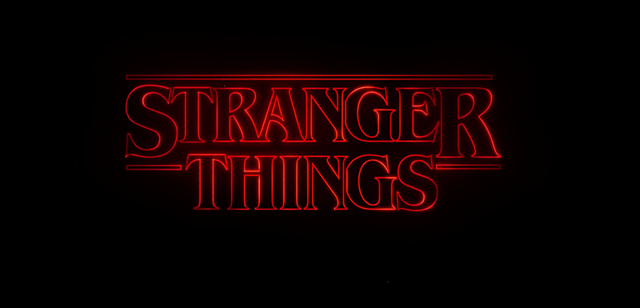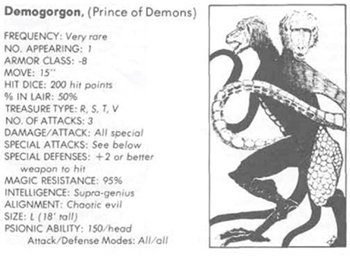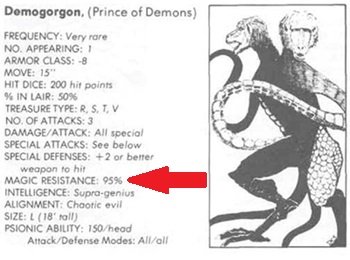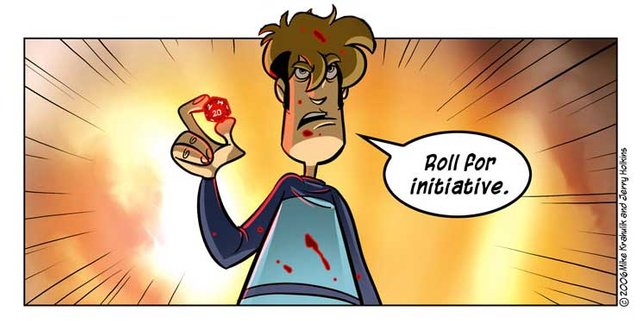Fireball him! Dungeons and Dragons, Stranger Things, and Other Nerdy Stuff

If you haven't seen the new Netflix series Stranger Things yet, you're missing out. It's a supernatural science-fiction/horror show set in the 1980s, and it's like if Stephen King, John Carpenter, and Steven Spielberg went and had a baby, albeit a three-headed one with the ability to start fires with its mind.
The first scene sets the stage for what kind of show this is going to be. Right in the second half of the cold open we see four 12-year-old kids sitting around a card table in the basement. Various nerd stuff is strewn about the scene, most notably the accouterments of everyone's favorite geeky pastime, Dungeons and Dragons. Mike, the Dungeon Master (DM for short), thrills the three other players with his narration:
"Something is coming. Something hungry for blood. A shadow grows on the wall behind you, swallowing you in darkness.... Did you hear that? That... that sound? Boom... boom... Boom! The Demogorgon!"
At this point, Mike helps slams a miniature figurine down on the table in front of his friends, scaring the crap out of them and sending them into a panic. But if you don't know what the hell a Demogorgon is, or you don't know your Hit Points from your Hit Dice, this scene is going to be a bit hard to comprehend exactly just why having a Demogorgon show up is such a big deal.
The Demogorgon: One Bad-Ass Mother

So an old fart like me has been playing D&D since the 1980s, when the 1st Edition of the Advanced Dungeons & Dragons rulebooks were all we had. This is what Demogorgon looked like in AD&D back then. First, let's get something straight: Demogorgon isn't just the name of a type of evil nasty creature - it's the name of the freaking Prince of Demons, people! This means he's pretty much a lord of Hell. He's not the guy with the whip and the pitchfork - no, he's the boss of the boss of the boss of the guy with the whip and the pitchfork. In other words, if you were in the same situation these kids were in, you would be shitting your pants too.
When it comes to the actual mechanics of AD&D, Demogorgon is a bitch and a half to fight. We're talking video game end-boss hard. Maybe more like Emerald Weapon from Final Fantasy VII hard.
Now, we don't get to see the actual fight between Mike's players and Demogorgon. Mike's mother interrupts the play session and sends the rest of the kids home, right after Will, one of the players, decides to try attacking the monster with a fireball spell. He says he needs to roll a 13 or higher on a 20-sided die (known as a d20 in nerd-speak) in order for his spell to be effective, but it rolls off the table while Mike is pleading with his mother, futilely, for a few more minutes. Will, Dustin, and Lucas go scrambling to find the d20 - only to see it came up a 7. "If Mike didn't see it, then it doesn't count," Dustin and Lucas tell Will.
Roll the Bones
So just what the hell was going on there? Well, there's been a lot of speculation among D&D grognards like me, and I've come up with a theory. Usually, you don't need to roll a d20 in order to see if you hit with a fireball. What happens instead is that the DM will roll a d20 on behalf of the monster to see how effective a spell is against it.
This isn't what happens here. Instead you've got Will rolling to see if the spell hits Demogorgon. At first, D&D nerds have pointed it out as an inaccuracy or a continuity error. Seriously, don't get roleplaying nerds riled up, we've got nothing better to do and we love to argue about pointless shit. But my theory is that there was something else going on here.
Do you see, on Demogorgon's stat block, how there's a line called Magic Resistance? Here, I'll highlight it for you:

That means the normal rules of trying to attack Demogorgon with magic don't apply. He's 95 percent immune to magical attacks completely. Now, the only way a player would be able to affect him with a spell would be to roll a pair of 10-sided dice - d10s - to generate a percentile number. One die is the tens digit, the other is the ones digit, which means the possible outcomes range from 01 through 00 (or 100). This would mean that you would need to roll a 96 or higher to overcome Demogorgon's innate magic resistance.
This isn't what Will does either, though. He simply rolls a d20 instead. However, this isn't necessarily an error - especially since you can scale down a successful roll of hitting that five percent by rolling a 20 on a d20, as the chances of that coming up are literally 1 in 20 - or 5 percent.
Yet Will says he needs a 13 or better. That's not 5 percent, is it? No, it's more like 40 percent. That's a much better chance.
So what's going on here?

image courtesy Penny Arcade
Well there's a couple of possibilities. One, we could be dealing with a situation here where Will's character might have an item or artifact in his possession that allows him to overcome the innate magic resistance of powerful monsters like Demogorgon. It could easily be represented in a bonus to his d20 roll. However, that's a bonus of +7, and that's pretty uncharacteristic in D&D. Usually the highest bonuses you can get from items max out at +5. Though this could have been something designed specifically by Mike, as the DM, in order to give the players a chance to overcome Demogorgon. Mike designed the campaign himself - over two weeks, he tells his mother - so it's absolutely plausible that he might have put a ridiculously high-powered item in the game to give Will, Dustin, and Lucas a fighting chance.
Of course, there's another explanation as well: Mike and his friends are playing with their own version of the D&D rules, one that changes how spells work. Maybe they prefer using a d20 to see if spells hit. Maybe Mike changed the statistics of the Demogorgon as officially published to be less of a challenge to the party. There are any number of possibilities because D&D as a rule set has always been flexible, and DMs have always come up with their own sets of rule variations. Known as House Rules, as long as the entire group agrees to abide by them, you can really do anything you want within the game.
Finally, though, we can't leave out the third distinct possibility: the writers just got it wrong, either on purpose to make it easier to understand to a wider audience, or by accident because they didn't do their research. I'd like to think they were just taking liberties with the source material to make for a better, more engaging storyline, but like I said - D&D nerds will argue about anything. I mean anything.
So what do you think? Was this a terrible gaffe on the part of the writers of Stranger Things? Was it intentional or an accident? Does it even really matter in the long run? I'd love to hear your thoughts on this, and everything else related to the show. Keep your comments spoiler-free if you can, not everyone has seen it yet - though if you haven't, you need to!
I have never played D&D mostly because I don't have anyone to play with where I live. Personally, I think it's intentionally done by the writers. Instead of the three waiting for what Mike rolls, they have a proactive role in determining what the outcome would be. It foreshadows the whole conflict of the series. The three kids (and the adults) don't just sit and wait to find out what happened to Will. They go out and try to find a way to find him. Going back to the analogy, I'd say 011 is the fireball and the creature is the Demogorgon. And, we know (or not know) how that turns out.
I like your interpretation! Having Will take action does give him agency as a character, and it probably plays out better than just having him and the other players sit around waiting for Mike to tell them what happens.
I like the idea of Eleven being the fireball in this interpretation, too. She is, after all, a powerful force to be reckoned with!
Is it really "Eleven" though? I'm a CompSci major and whenever I see 011 (0 kept intact), I consider it binary, which converts to "3" in decimal. It's really odd to insert a 0 before 11 if "eleven" is what's really meant.
Sure, there are arguments that point to the tattoo as a designation much like Nazi concentration camps, although in a laboratory/test subject kind of setting. It's just really weird that there's a 0 there. Do they intend to go until 999 and stop there? Since the 80s are the advent of the computer revolution, it could be an homage to that by the creators.
Anyway, yeah, that's how I interpreted it, since 011 is pretty much the only weapon they had against it. Sure the three teens tried to burn it at one point as well, but I guess their d20 roll landed on a miss.
I upvoted You
Nice @beowulfoflegend
Shot you an Upvote :)
Great article. I'm a sucker for anything D &D related. I wish I had gotten more into it as a kid, but alas, those days are gone!
To be totally honest, I'd say the writers just drew on what they knew, did a little bit of research and got on with the story. While it may be great for a handful (and by handful, I'm obviously referring to millions of nerds worldwide) of nerds to fixate on some inconsistency, but the show just wasn't about playing D&D. It was about another freakish monstrosity that abducted a kid for reals.
If you're into fantasy writing, I'd love if you'd check out a story I'm writing (part of a larger saga, "Adventures in Elowyn Glade.")
Cheers!
Nick
hey y'all I work ilustrating D&D maps. that's my job, head over to my blog @derekvonzarovich
Check out: https://steemit.com/strangerthings/@cryptxx/predictions-on-stranger-things-season-4-spoiler-alert